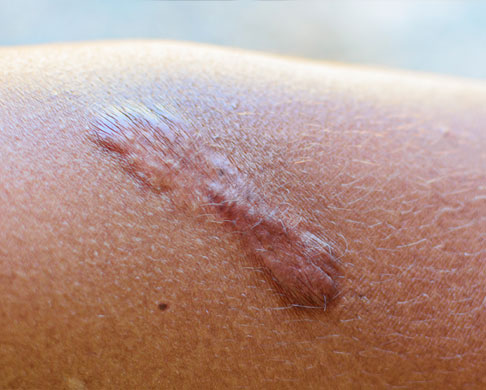Tips for Preventing Keloid Scars: What You Need to Know
Introduction
Keloid scars can be a source of frustration and self-consciousness for individuals who are prone to developing them. While keloid scars may not be entirely preventable, there are steps you can take to minimize their formation or reduce their severity. In this blog post, we will discuss essential tips for preventing keloid scars, providing you with valuable knowledge to help minimize their impact on your skin.
• Proper Wound Care
Taking care of wounds and injuries is crucial in preventing keloid scars. Follow these guidelines to promote optimal healing:
- Cleanliness: Keep the wound clean to prevent infection. Gently wash the area with mild soap and water, and cover it with a sterile bandage or dressing.
- Moisturization: Apply a thin layer of petroleum jelly or an antibiotic ointment to keep the wound moist. This helps prevent excessive drying, which can lead to scarring.
- Avoid Irritants: Protect the wound from irritants such as harsh chemicals or tight clothing that may rub against the area.
• Minimize Tension on the Wound
Excessive tension on a healing wound can contribute to keloid formation. To reduce tension:
- Avoid Stretching: Refrain from stretching or pulling the skin surrounding the wound. This can be particularly important for wounds on the chest, shoulder, or joint areas.
- Supportive Dressings: Use pressure dressings or silicone gel sheets recommended by your healthcare professional. These can help minimize tension on the wound and promote flatter scar formation.
Avoid Piercings and Tattoos
Individuals prone to keloid scarring should carefully consider getting piercings or tattoos, as these can increase the risk of keloid formation. If you still choose to get a piercing or tattoo:
- Seek Professional Expertise: Make sure to go to a professional and reputable piercer or tattoo artist who follows strict hygiene practices.
- Test Patch: Consider getting a small test patch done before committing to a larger tattoo or piercing. This will help you assess how your skin responds and whether keloid formation is likely.
- Consult with a Keloid Specialist
If you have a personal or family history of keloid scars, it is advisable to consult with a dermatologist. They can provide personalized advice and recommend specific preventive measures based on your individual risk factors.
- Conclusion
While keloid scars may be challenging to prevent entirely, implementing these preventive tips can help minimize their formation or reduce their severity. By taking proper care of wounds, minimizing tension on healing skin, protecting against sun exposure, and making informed choices regarding piercings and tattoos, you can reduce the likelihood of keloid scars. Remember, consulting with a dermatologist is essential for individuals at higher risk, as they can provide specialized guidance and recommend additional preventive measures. With these proactive steps, you can take control of your skin health and minimize the impact of keloid scars on your appearance and self-confidence.

